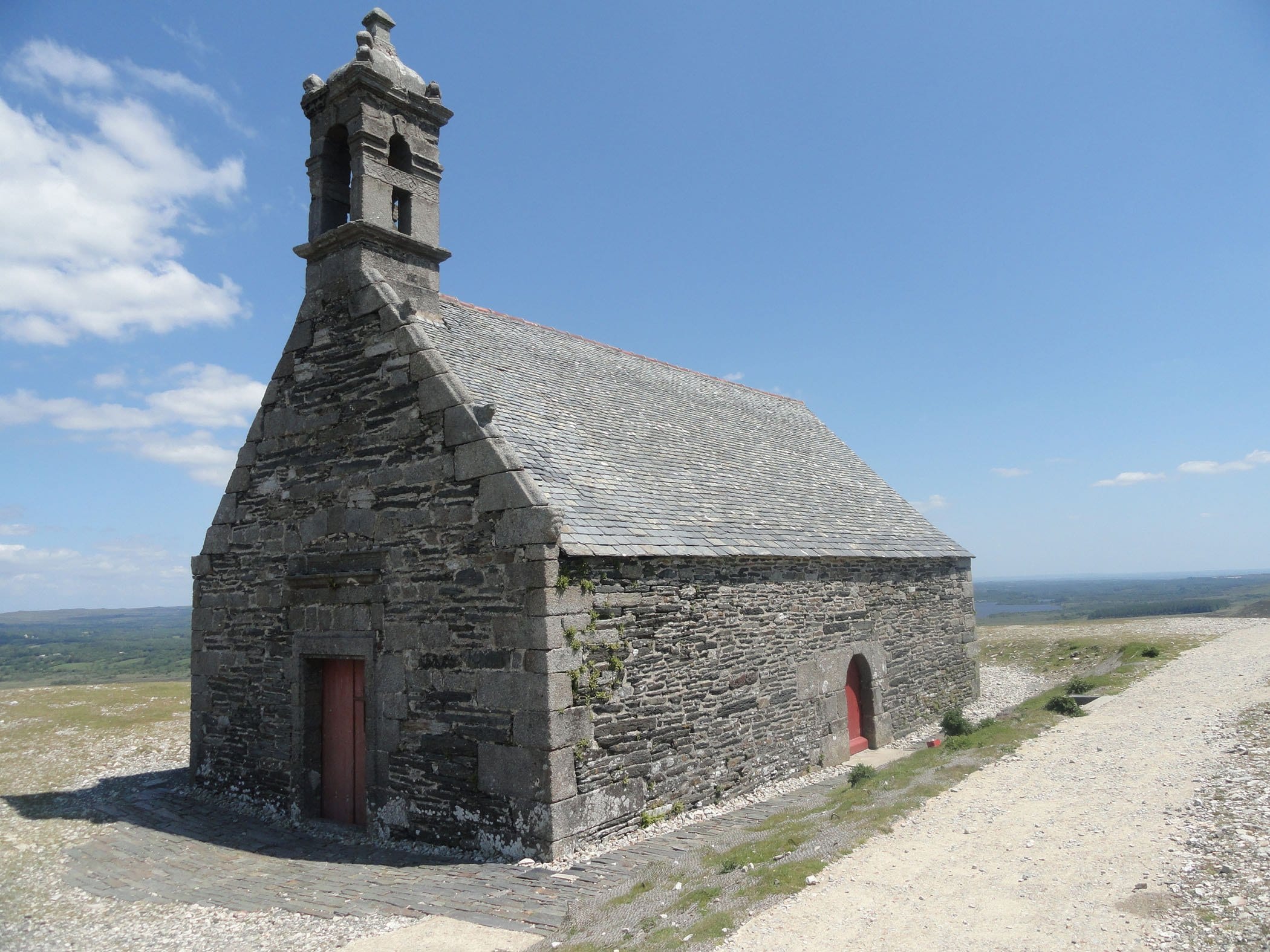I titled last week’s blog ‘Hot Property’ based on the, rather brilliant, news that we had made a list of the top 25 gîtes and villas to stay in Northern France in The Times Weekend section. It also reflected that we were enjoying (enduring?!) a record-breaking heatwave. We didn’t realise that the property risked getting even hotter – and not in quite such a good way.
On Monday the temperature peaked at just below 40 degrees Celsius (41.6 degrees was the record for Brittany that day, but a little further inland) which was the culmination of weeks of heat and months of little, if no, rainfall. As a consequence, the Monts D’Arrée had become tinder-dry.
The Monts D’Arrée is an area of approximately 190,000 hectares which, 300 million years ago, were high mountains which formed the Armorican massif. Now heavily eroded to be much lower hills, they are a natural, un-managed mix of moorland, peat bogs, marsh and heather covered heathland.
Evidence exists of man occupying the region in the late stone age with many neolithic monuments, burial sites and standing stones (menhirs) surviving today – one of the most well-known is the allée couverte at Mougau Bihan just a few kilometres from us. This is a large burial chamber dating from about 3000 BC and well worth a visit.
As a consequence, the Monts D’Arrée is the source of many stories and legends and is well visited by Bretons and the French more widely. Today, the ‘heart’ of the Monts is the small chapel on Menez Mikel which is a must-see for anyone visiting the area which is 8 kms from Kergudon.


Last Monday we started hearing news that a heathland fire had started in the Monts between St. Rivoal and Brasparts and a number of roads had been closed.
I didn’t think too much of it initially until early afternoon when I was on our top floor and saw the smoke the fire was generating and it became a little more real.

Gradually through the course of the afternoon it became apparent that the fire was large and growing. The excessive heat and a brisk wind made tackling it difficult for the pompiers.
As night fell, the orange glow we could see from our house made it clear that things were not totally under control and we went to bed with some uncertainty about how things would develop. We woke on Tuesday to news that our friends’ campsite (between us and Commana) had received a visit from the Gendarmes at 3 am to evacuate all the campers. Mercedes’ was also told that she couldn’t open her restaurant at the lake while the fire remained uncontained. We wondered if Saint Cadou would be next on the list as too, I suspect, had our guests!


We understand the evacuations near us where more due to the smoke and impact on air quality, but other villages and hamlets, closer to the seat, had been evacuated due to the imminent risk from the fire itself.
Thankfully, over the course of Tuesday the firefighters had started to gain the upper hand. They had managed to mobilise more people and equipment and were helped (a little) by some light drizzle and a significant drop in temperature. All of the local farmers contributed to the effort by using their water bowsers to ferry water from the Lac du Drennec to the front line.

Thankfully, and amazingly, there were no reports of fatalities in the fire, although tragically I understand one pompier was killed in a car accident yesterday – probably exhausted driving home after a number of days firefighting. Equally, the efforts of the fire fighters meant that no homes or property had been lost (other than a single fire engine that was evidently in the wrong place at the wrong time).
Now, almost a week after the initial fire, a number of roads remain closed and there are a few smaller fires apparently still burning. Thankfully however, the campsite and Au Lac have been allowed to reopen.
Most alarmingly, there is a belief by the Gendarmes that the number and location of some of the additional fires suggest that not all are natural and there may well be some which have been started deliberately. If that is the case, we really hope they are able to identify who is responsible and take appropriate action.
There are many images of the fires on social media. So as not to risk any copyright infringement(!) I have not copied them here but we have shared some on our Facebook page and there are a number of other pages which are worth looking at. Two of the best are the Préfet du Finistère and Le coeur des Monts d’Arrée.
The images and drone footage of the burnt heath which can be seen online now is dramatic in its own way and shows the extent of the fire. The little chapel St. Mikel has survived unscathed and now sits surrounded by burnt ground.
While very sad, the Monts will recover in time. The impact on the flora and fauna has been significant and it will change the nature and character of the area for a number of years to come but it will be interesting to watch them re-grow and recover.
I was going to blog this week on the back of the delays and queues in Dover and say, for your perfect holiday here, you can avoid that by using the Brittany Ferries services from Portsmouth or Plymouth – especially as Brittany Ferries have now opened their reservations all the way through to November 2023. However, this is already a longer blog than most so, perhaps more of that next week.
Ciao!
